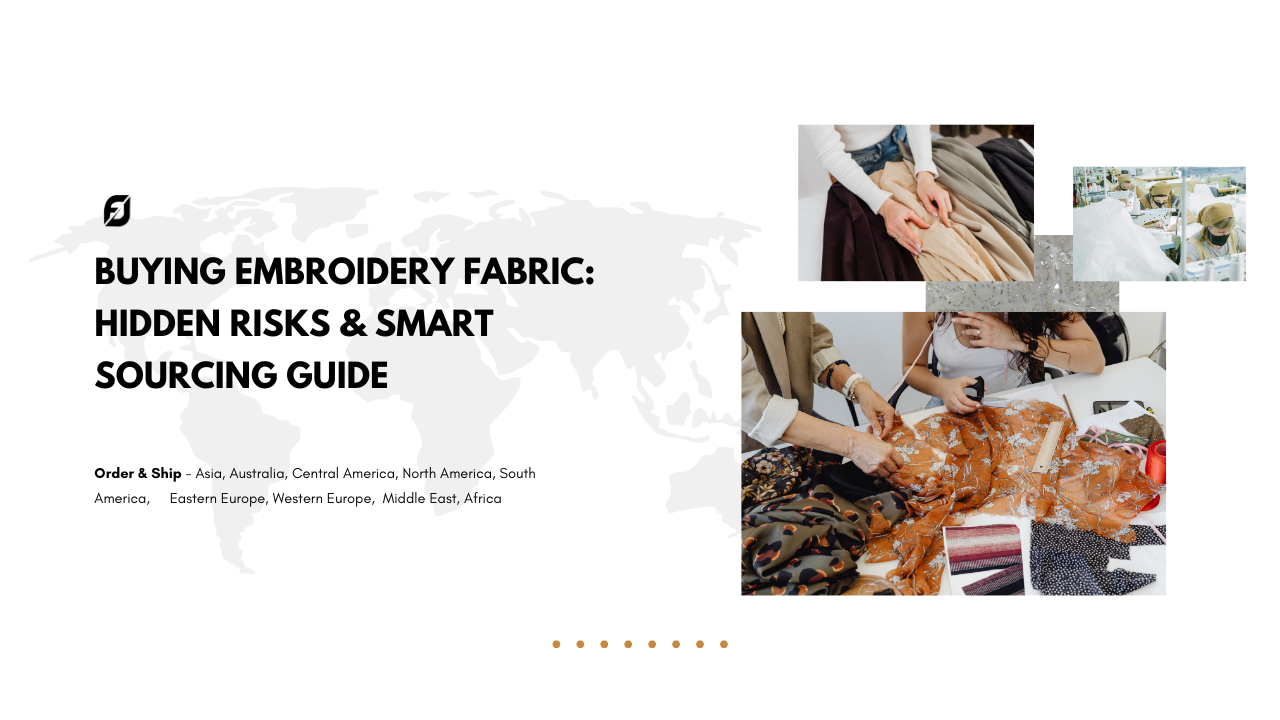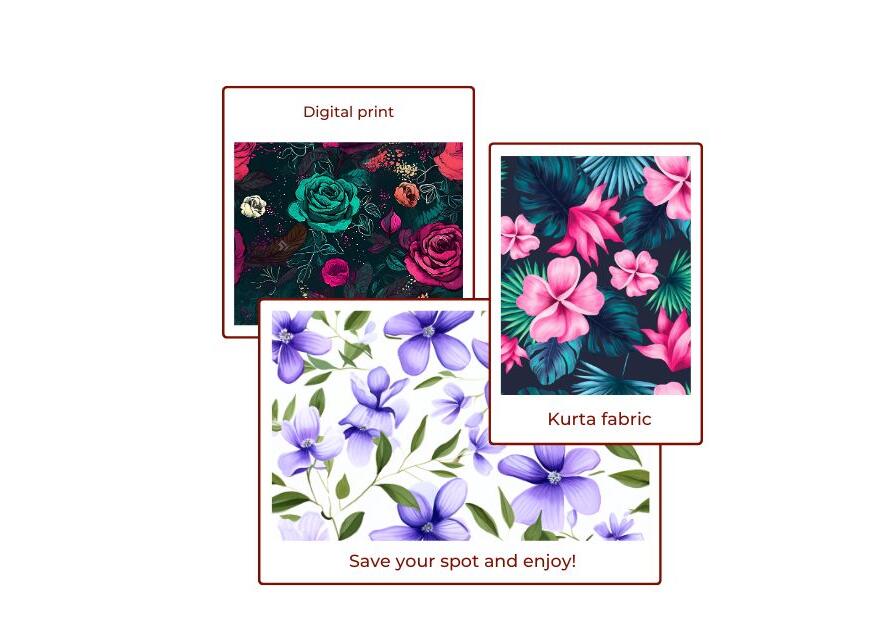Starting a boutique can be a dream come true, but it comes with its own set of challenges.
For aspiring boutique owners, understanding the main issues and planning accordingly is crucial to building a successful business.
Key Challenges for Boutique Owners and How Madhav Fashion Can Help
Below, we’ll discuss the key areas to focus on and how Madhav Fashion can play a pivotal role in establishing your boutique.
1. Main Issues Faced by Boutique Owners
- Understanding the Market: Before launching, it’s essential to have a clear understanding of your target market. Who are your customers? What are their preferences, and how can you meet their needs better than competitors?
- Sourcing Quality Fabrics: One of the biggest challenges is finding reliable suppliers who offer high-quality fabrics that align with your boutique’s vision. Without a trustworthy fabric source, maintaining consistent quality becomes difficult.
- Budget Management: Starting a boutique requires a significant investment, and managing your budget is key. You’ll need to allocate funds for inventory, branding, marketing, staff, and more.
- Branding and Marketing: Establishing a strong brand identity, including choosing a memorable name, designing a compelling logo, and creating a marketing strategy, is vital to attract customers and build loyalty.
- Choosing the Right Concept: Whether you’re launching with ready-made designs or offering customization, your boutique’s concept must resonate with your target audience. This could be anything from eco-friendly clothing to luxury fashion.
2. What to Consider Before Starting – Boutique Owners
- Market Research: Conduct thorough research on competitors, market trends, and customer preferences. This will help you position your boutique uniquely in the market.
- Business Plan: Develop a comprehensive business plan, detailing your budget, marketing strategies, and growth projections. This plan will serve as your roadmap to success.
- Legal Requirements: Ensure that you understand and comply with all legal requirements, including business registration, taxes, and permits.
- Location: Choose a location that’s easily accessible and has high foot traffic to attract customers.
3. Budget Considerations
Your budget should cover the following:
- Inventory: Fabric and materials are the backbone of your boutique. Allocate a significant portion of your budget to sourcing high-quality fabrics.
- Marketing: Invest in branding, social media campaigns, and other promotional activities to build your brand’s presence.
- Overheads: Rent, utilities, and salaries are ongoing costs that must be factored into your budget.
4. Sourcing Fabric
- Finding Reliable Suppliers: Partnering with a trusted fabric manufacturer or wholesaler is crucial. Look for suppliers with a track record of delivering quality and consistency.
- Quality Over Quantity: Choose suppliers that offer minimum order quantities, allowing you to maintain quality without overstocking.
- Customization Options: Work with manufacturers that offer customization facilities, allowing you to create unique pieces that set your boutique apart.
5. Selecting the Right Concept
- Understanding Customer Needs: Whether you’re focusing on luxury fashion or eco-friendly clothing, your concept should align with your customers’ preferences.
- Customization: Offering bespoke designs can be a major draw for customers seeking unique, personalized clothing.
6. Branding and Team Building
- Brand Name and Logo Design: Choose a name and design a logo that reflects your boutique’s identity and appeals to your target market.
- Building a Team: Assemble a team that shares your vision and has the skills necessary to help your boutique succeed.
7. How Madhav Fashion Can Help
Madhav Fashion, the most popular embroidered fabric manufacturing brand in Asia, offers unparalleled support to boutique owners:
- High-Quality Fabrics: Whether you need plain, printed, or embroidered fabrics, Madhav Fashion provides top-quality materials that meet the highest standards.
- Customization Facilities: With a minimum order quantity of just 25 meters, Madhav Fashion allows you to customize fabrics according to your unique designs, ensuring your boutique stands out.
- Unique Concept Designs: Madhav Fashion offers innovative design concepts that can inspire and elevate your collections, helping you create distinctive garments that resonate with your customers.
By partnering with Madhav Fashion, you’ll have access to the resources and expertise needed to establish and grow a successful boutique, ensuring that you’re offering only the best to your customers.
___________________________________________
FAQs for Starting and Establishing a Boutique
1. What are the essential steps to start a boutique?
Starting a boutique involves several key steps. First, conduct thorough market research to understand your target audience and competition. Develop a detailed business plan outlining your concept, budget, and marketing strategies. Secure funding through personal savings, loans, or investors. Choose a suitable location with high foot traffic and good visibility. Register your business and obtain any necessary licenses or permits. Design your boutique’s interior to align with your brand’s identity. Finally, source quality fabrics and materials, hire a skilled team, and launch your marketing campaign to attract customers. Each of these steps is crucial to establishing a successful boutique.
2. How much budget is required to start a boutique?
The budget for starting a boutique varies depending on several factors, including location, size, and the scope of your business. On average, you should budget for the following: inventory (including fabric and materials), which can range from 5,000 to 20,000; store setup and design, which might cost between 10,000 and 30,000; marketing and branding expenses, potentially around 2,000 to 10,000; and operational costs such as rent, utilities, and salaries. It’s important to have a cushion for unexpected expenses. A detailed budget plan will help you manage costs effectively and ensure smooth operations.
3. How do I source high-quality fabric for my boutique?
Sourcing high-quality fabric involves finding reliable suppliers and manufacturers. Start by researching reputable fabric suppliers and visiting trade shows to explore different options. Check for quality certifications and read reviews from other boutique owners. Establish relationships with multiple suppliers to compare prices and quality. Consider ordering samples to test the fabric before placing bulk orders. It’s beneficial to choose suppliers who offer customization options and have a minimum order quantity that fits your needs. By partnering with trusted suppliers, you can ensure your boutique’s inventory meets your quality standards.
4. What factors should I consider when choosing a boutique location?
Choosing the right location for your boutique is critical to its success. Consider factors such as foot traffic, visibility, and accessibility. High-traffic areas with good visibility attract more potential customers. Ensure the location is easily accessible by public transportation and has ample parking. Evaluate the local demographics to ensure they align with your target market. Additionally, consider the rental costs and lease terms to ensure they fit within your budget. Conducting a thorough location analysis will help you select a spot that maximizes your boutique’s potential for success.
5. How can I effectively market my new boutique?
Effective marketing for a new boutique involves a combination of strategies. Start by building a strong brand identity, including a memorable name and logo. Use social media platforms to create awareness and engage with potential customers through regular posts and promotions. Invest in online and offline advertising, such as local magazines or targeted online ads. Host a launch event or in-store promotions to attract initial foot traffic. Additionally, build partnerships with local influencers or bloggers to increase visibility. Consistent and strategic marketing efforts will help establish your boutique’s presence and attract loyal customers.
6. What should be included in a boutique business plan?
A comprehensive boutique business plan should include several key components. Start with an executive summary outlining your boutique’s mission, vision, and goals. Include a market analysis that identifies your target audience, competition, and market trends. Describe your boutique’s concept, including the products or services you’ll offer and your unique selling proposition. Detail your marketing and sales strategies, operational plan, and financial projections. Provide a budget and funding plan, and outline your team structure and management approach. A well-structured business plan serves as a roadmap for your boutique’s development and growth.
7. How do I select the right fabric manufacturer or wholesaler?
Selecting the right fabric manufacturer or wholesaler involves careful evaluation. Research potential suppliers by checking their reputation, reviews, and industry experience. Look for manufacturers who offer high-quality fabrics and have a track record of reliability. Evaluate their pricing, minimum order quantities, and delivery times. Request samples to assess fabric quality and consistency. Consider their ability to provide customization options if needed. Establish clear communication and ensure they understand your requirements. Building a strong relationship with a trusted manufacturer or wholesaler will help you maintain consistent quality and meet your boutique’s needs.
8. What are some effective branding strategies for a boutique?
Effective branding strategies for a boutique involve creating a strong and recognizable identity. Start by defining your brand’s values, mission, and target audience. Develop a unique brand name and logo that reflect your boutique’s personality and appeal to your customers. Consistently apply your branding elements across all marketing materials, including your website, social media, and store design. Create a compelling brand story that resonates with your audience and sets you apart from competitors. Engage with your customers through personalized experiences and high-quality products. A cohesive and authentic brand identity will help build customer loyalty and drive success.
9. How can I offer customized clothing to my boutique’s customers?
Offering customized clothing involves several steps. Begin by understanding your customers’ preferences and needs through surveys or direct feedback. Partner with fabric suppliers and manufacturers who offer customization options, such as different fabrics, prints, or embroidery. Develop a design process that allows customers to choose styles, colors, and details. Ensure that you have skilled staff or designers to assist with the customization process. Communicate clearly with customers about their choices and delivery timelines. By providing personalized options, you can enhance customer satisfaction and differentiate your boutique from competitors.
10. How can Madhav Fashion assist in establishing a successful boutique?
Madhav Fashion, a leading embroidered fabric manufacturer in Asia, offers significant support for establishing a successful boutique. They provide a wide range of high-quality fabrics, including plain, printed, and embroidered options, ensuring that you have access to premium materials for your collections. Their customization facilities allow you to create unique designs tailored to your boutique’s concept, with a minimum order quantity of just 25 meters. Madhav Fashion’s innovative design concepts can inspire your collections and help set your boutique apart. By partnering with Madhav Fashion, you can benefit from their expertise, quality, and flexibility, contributing to your boutique’s success.






